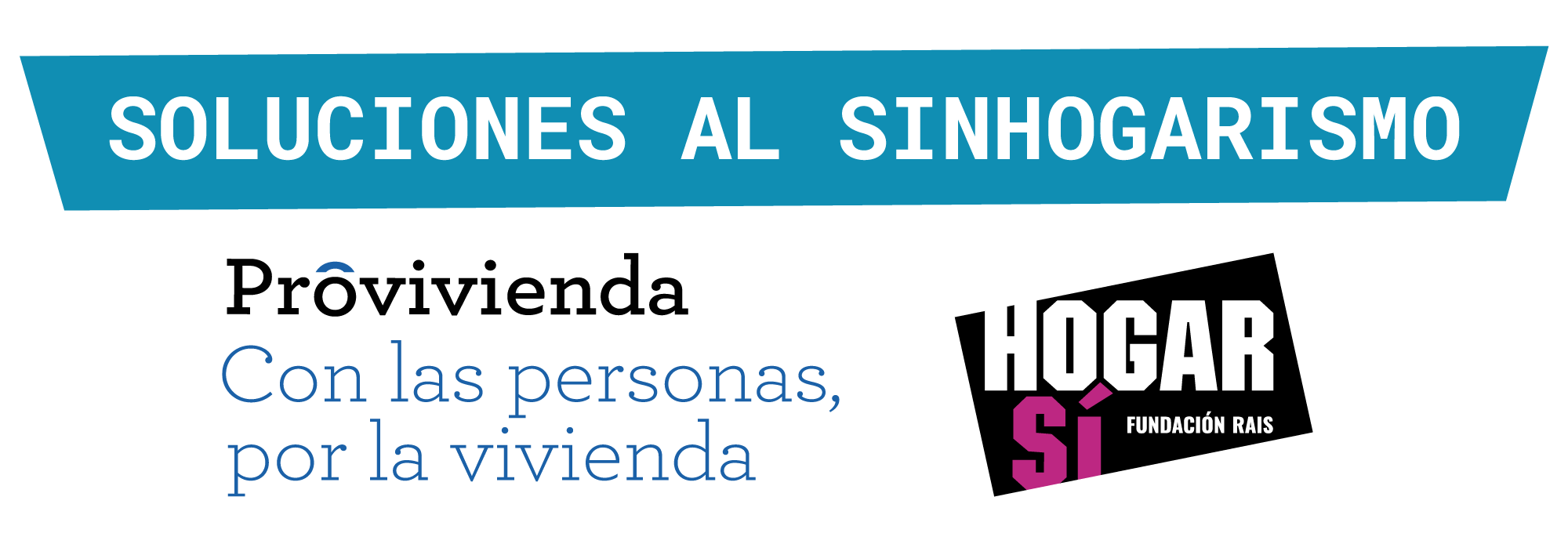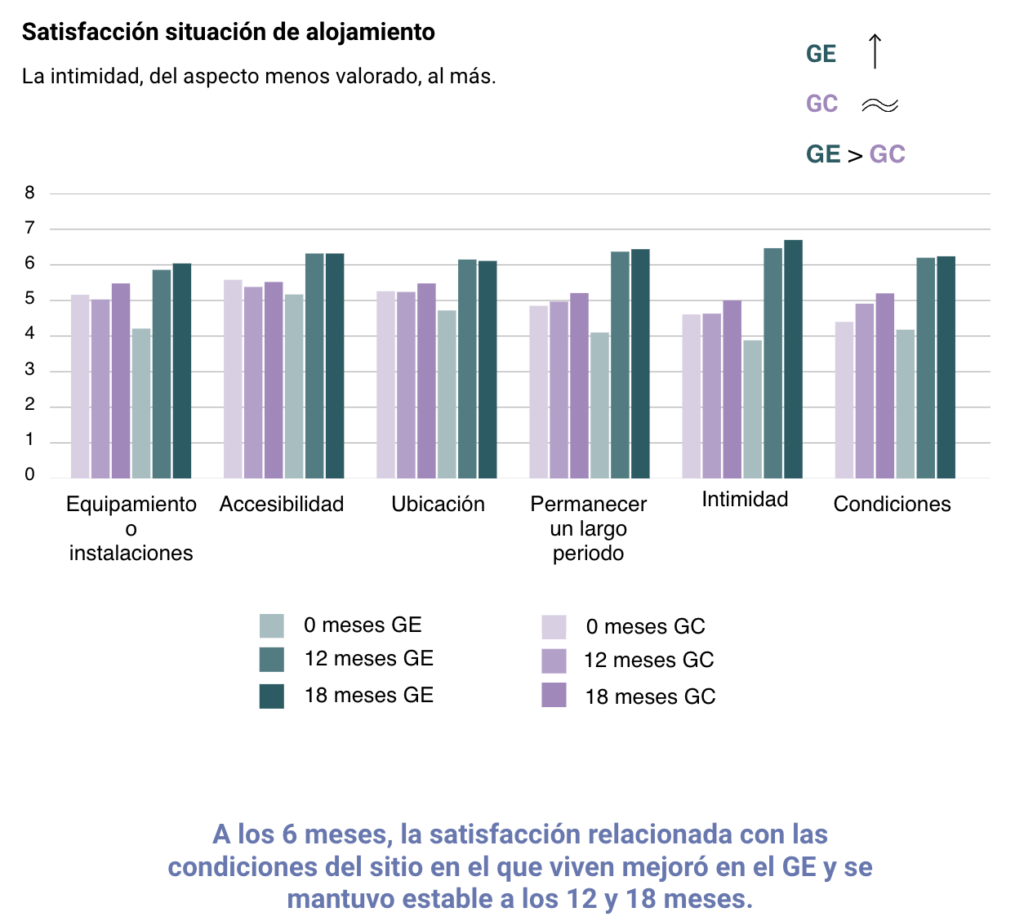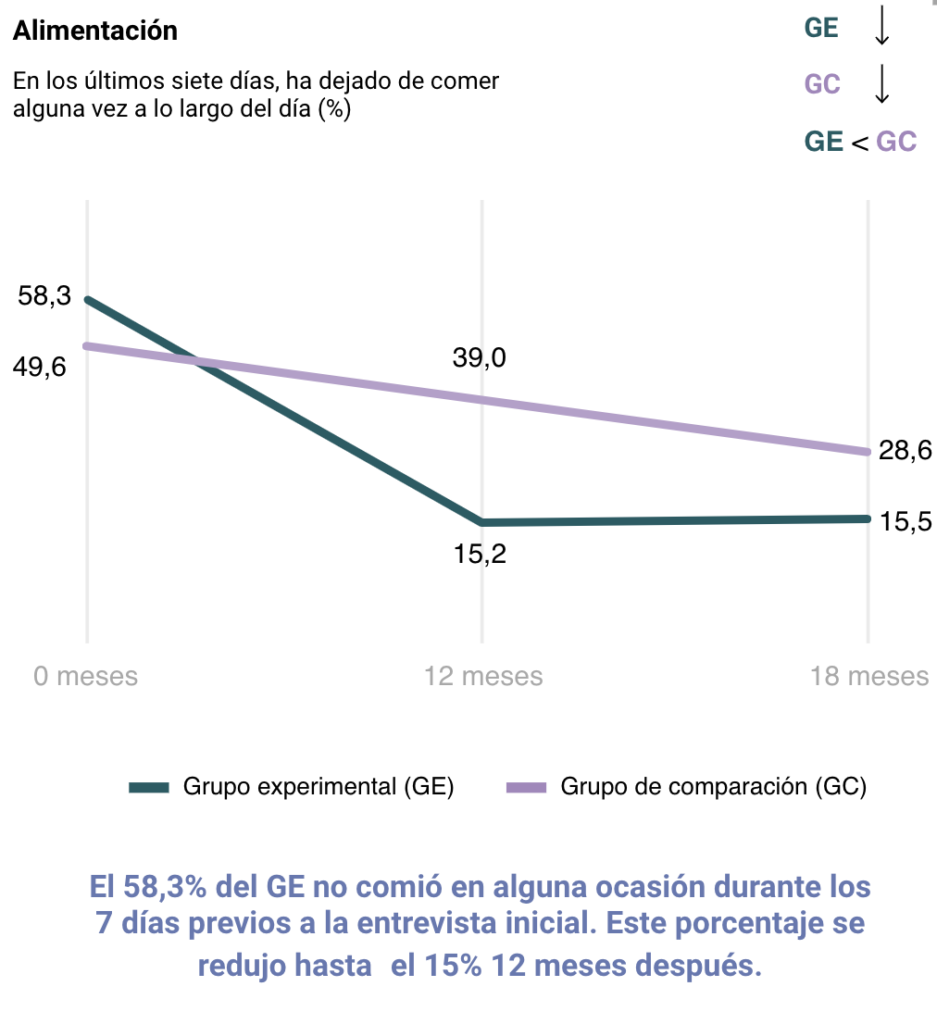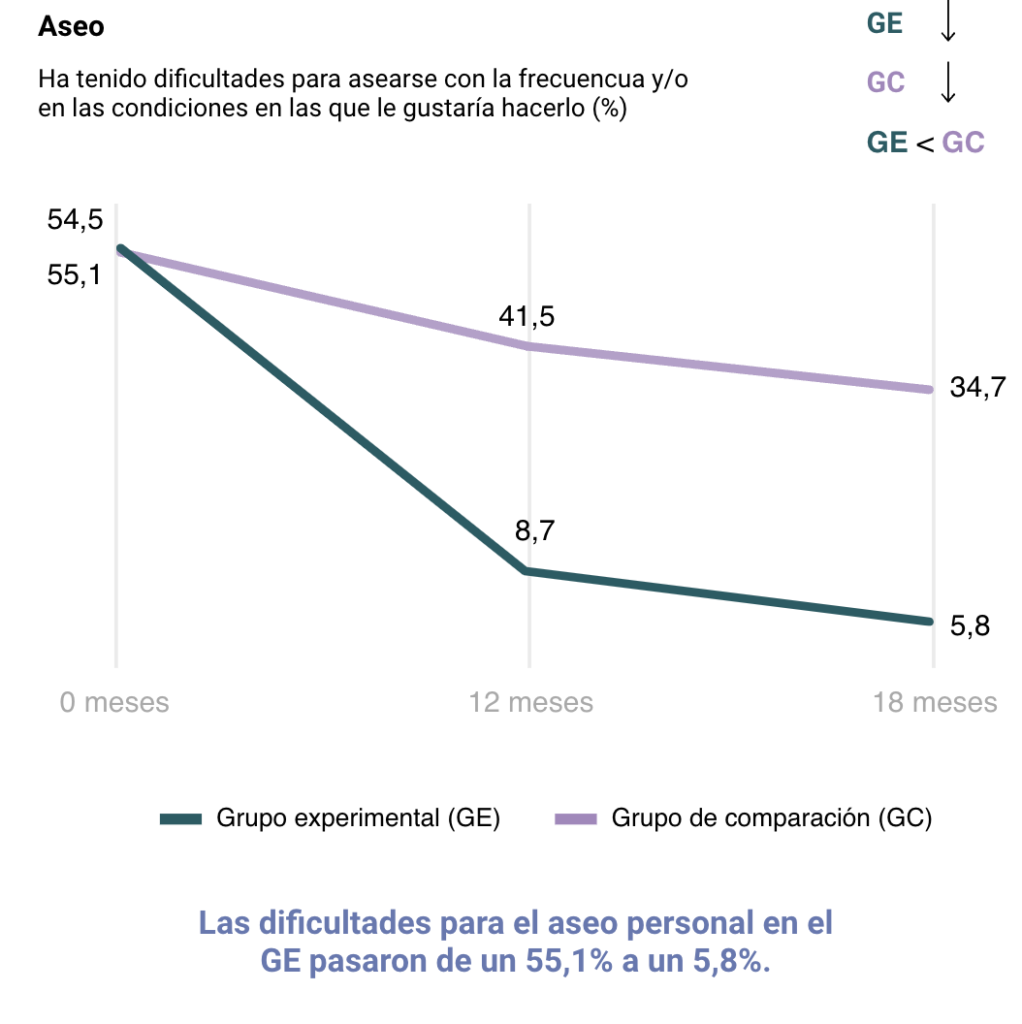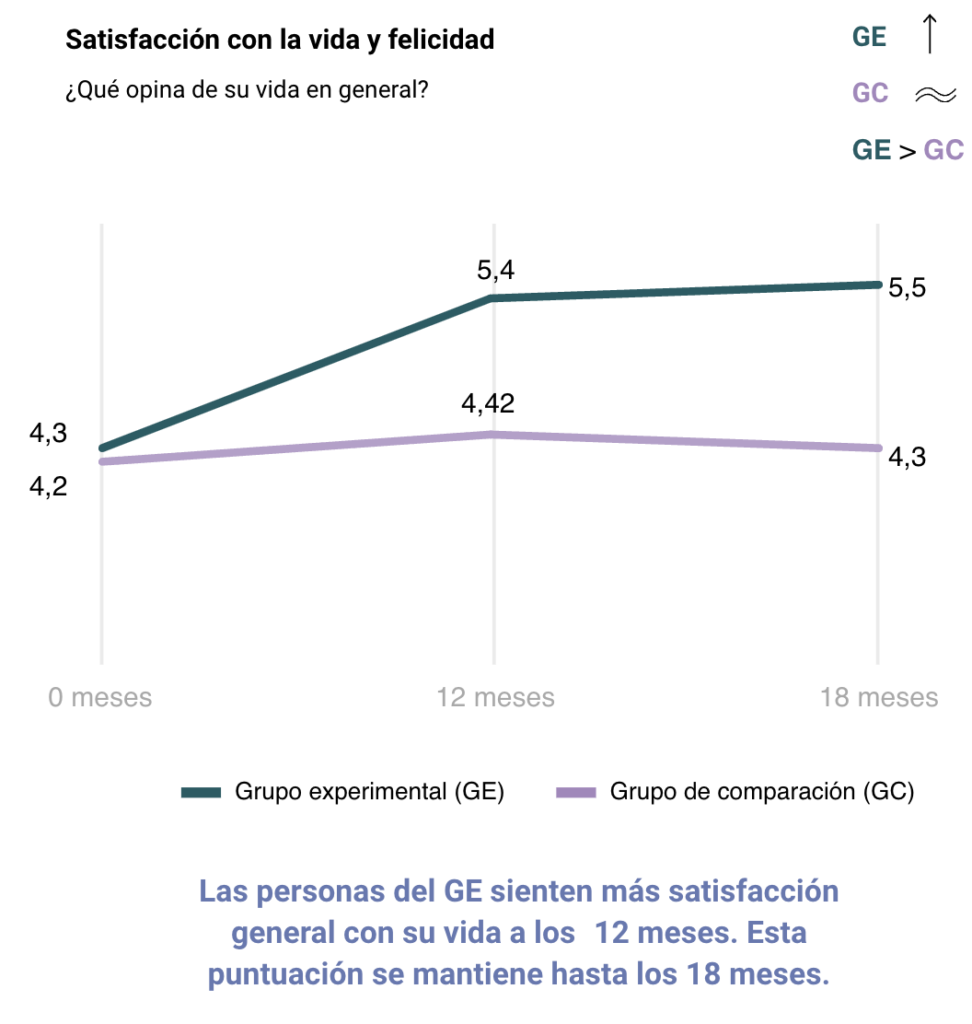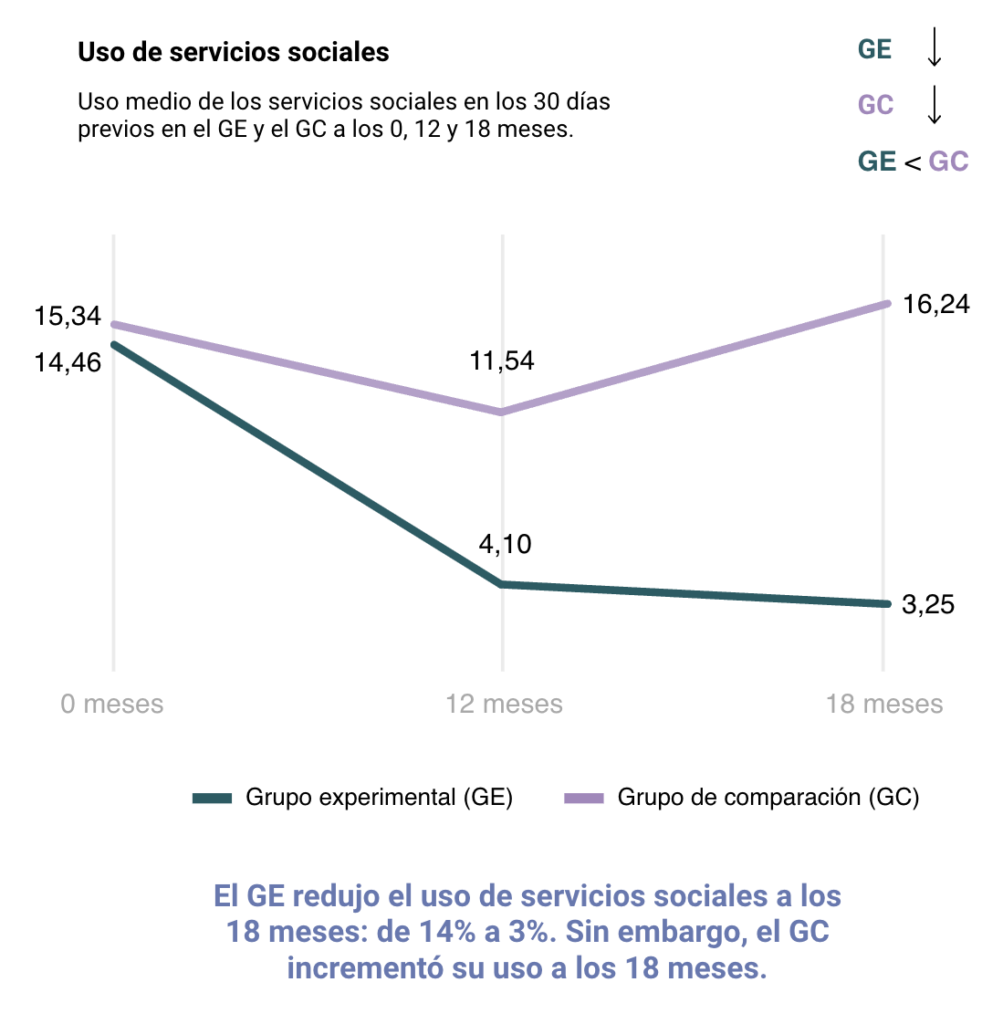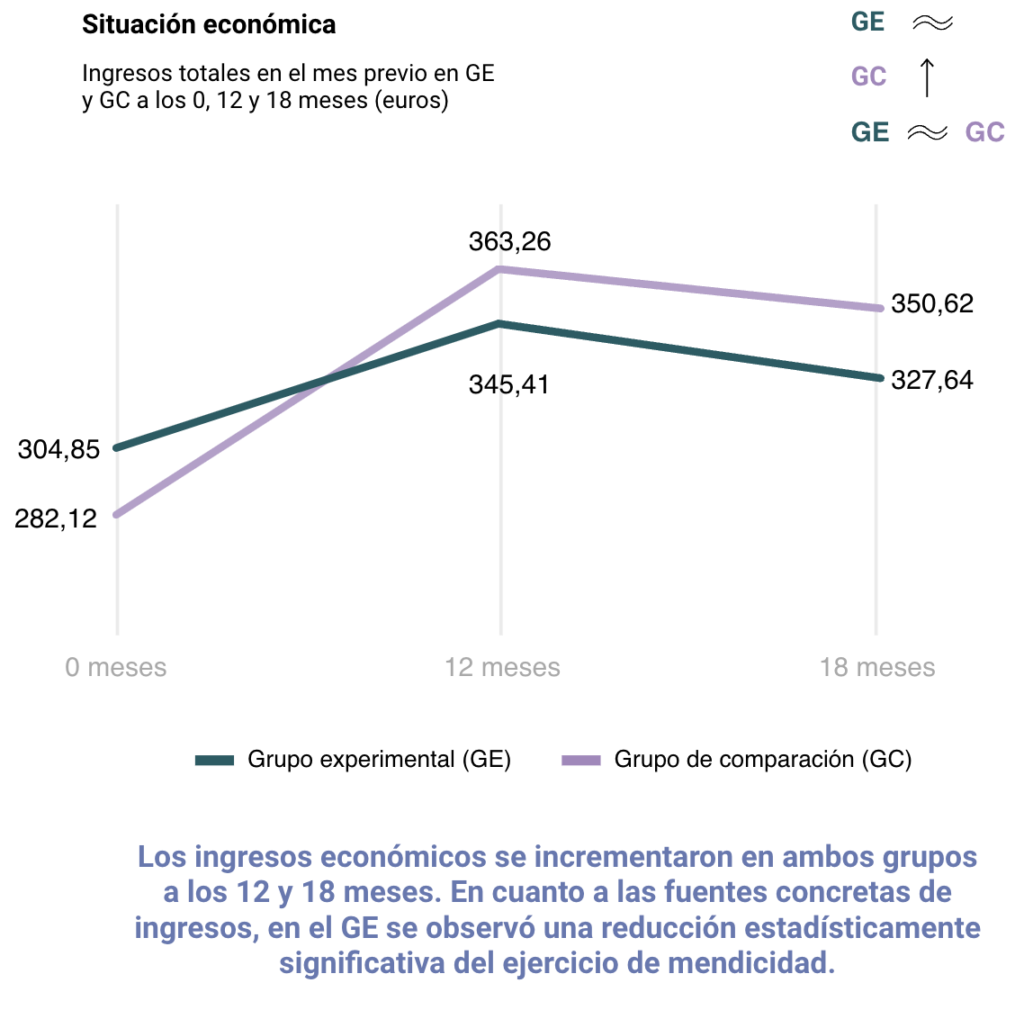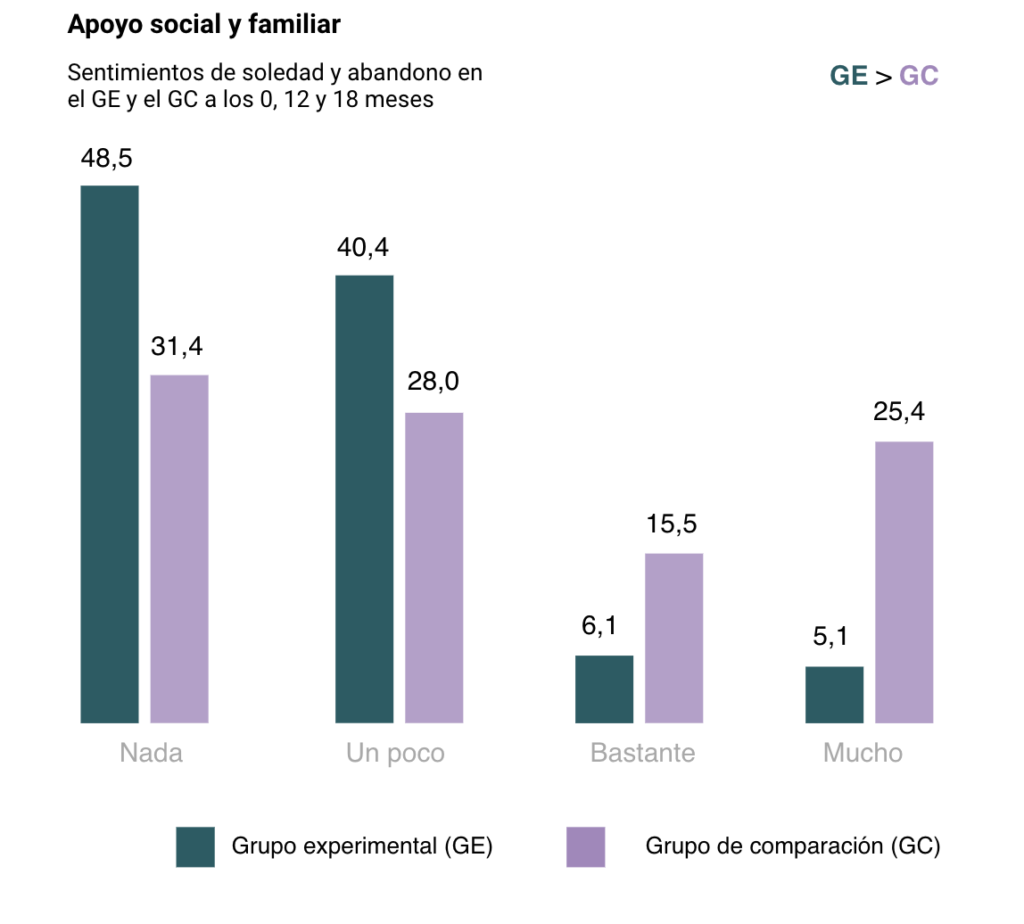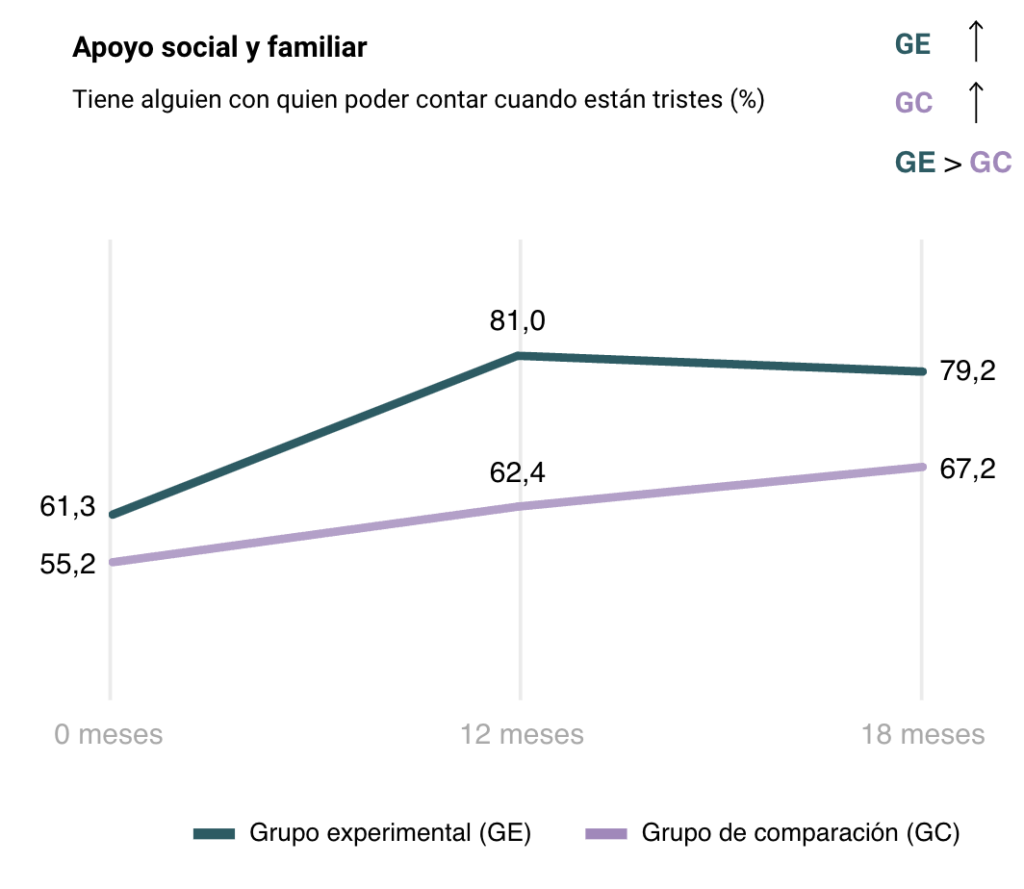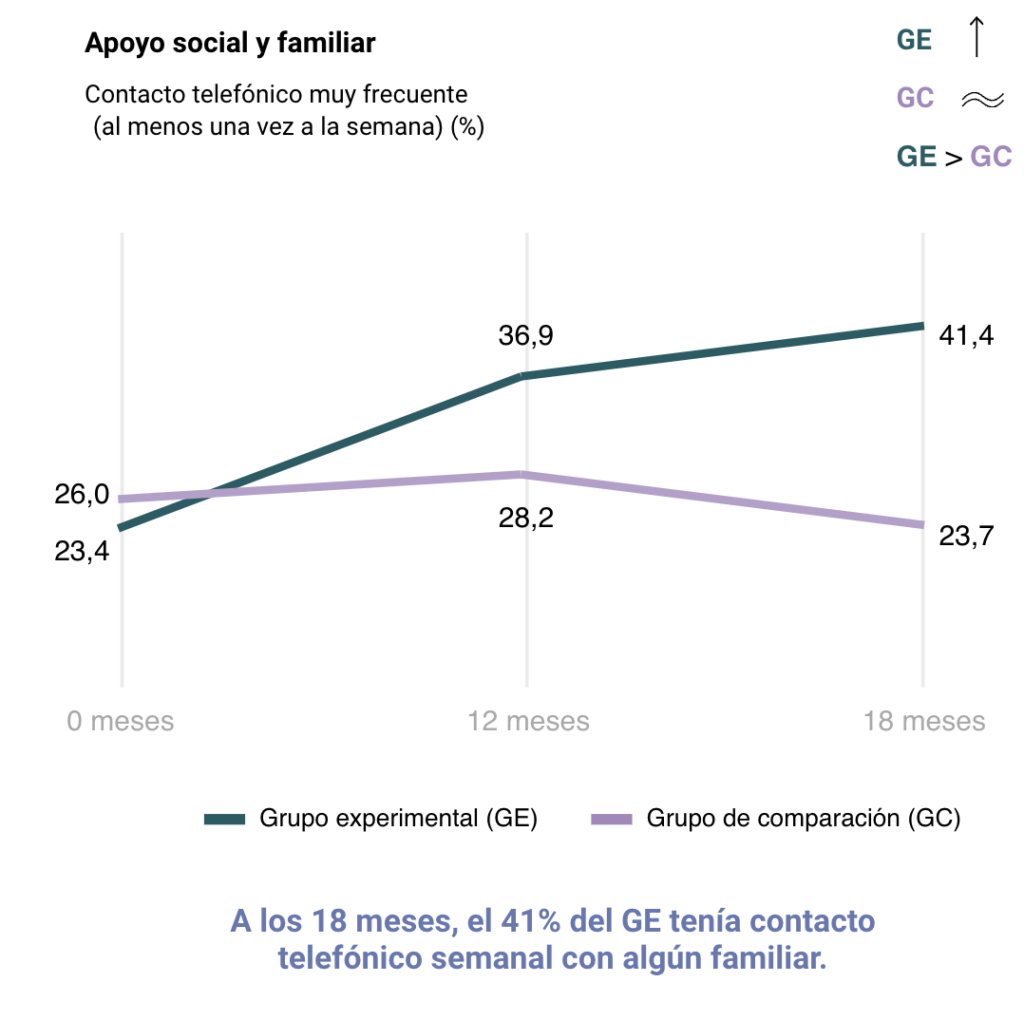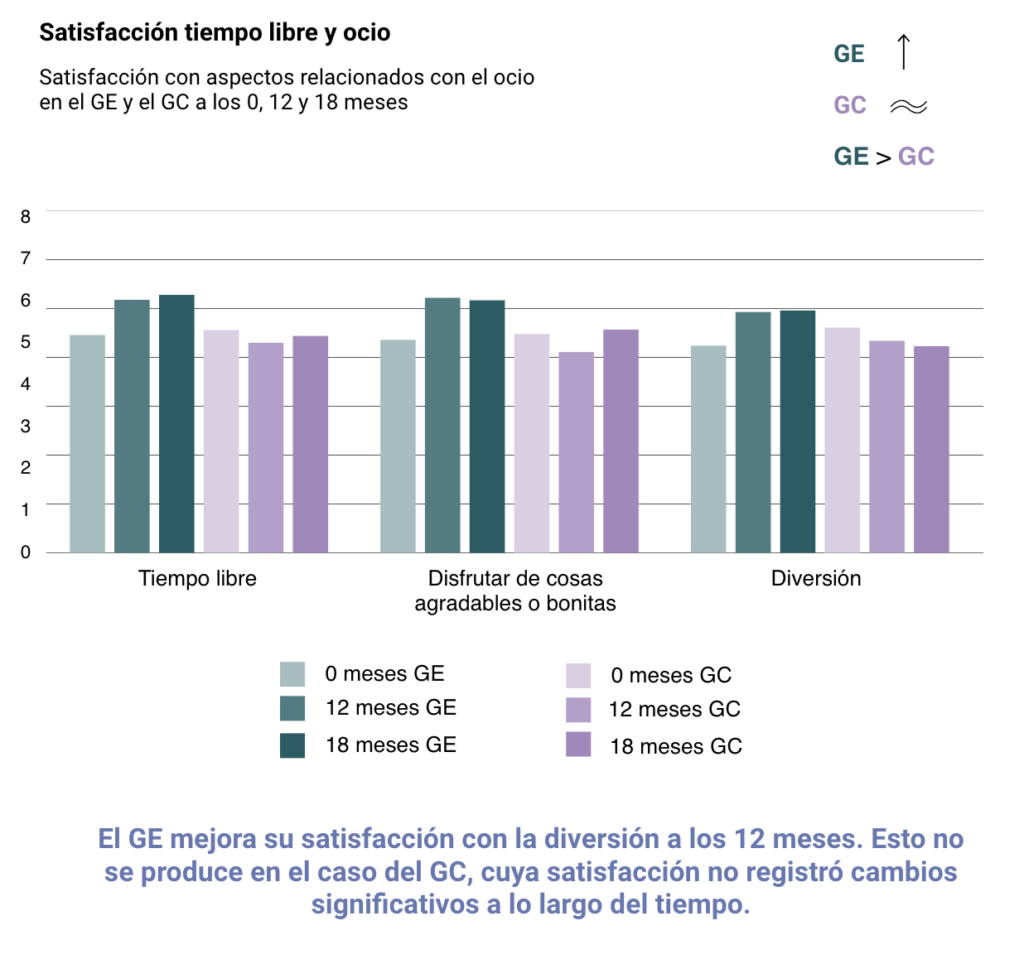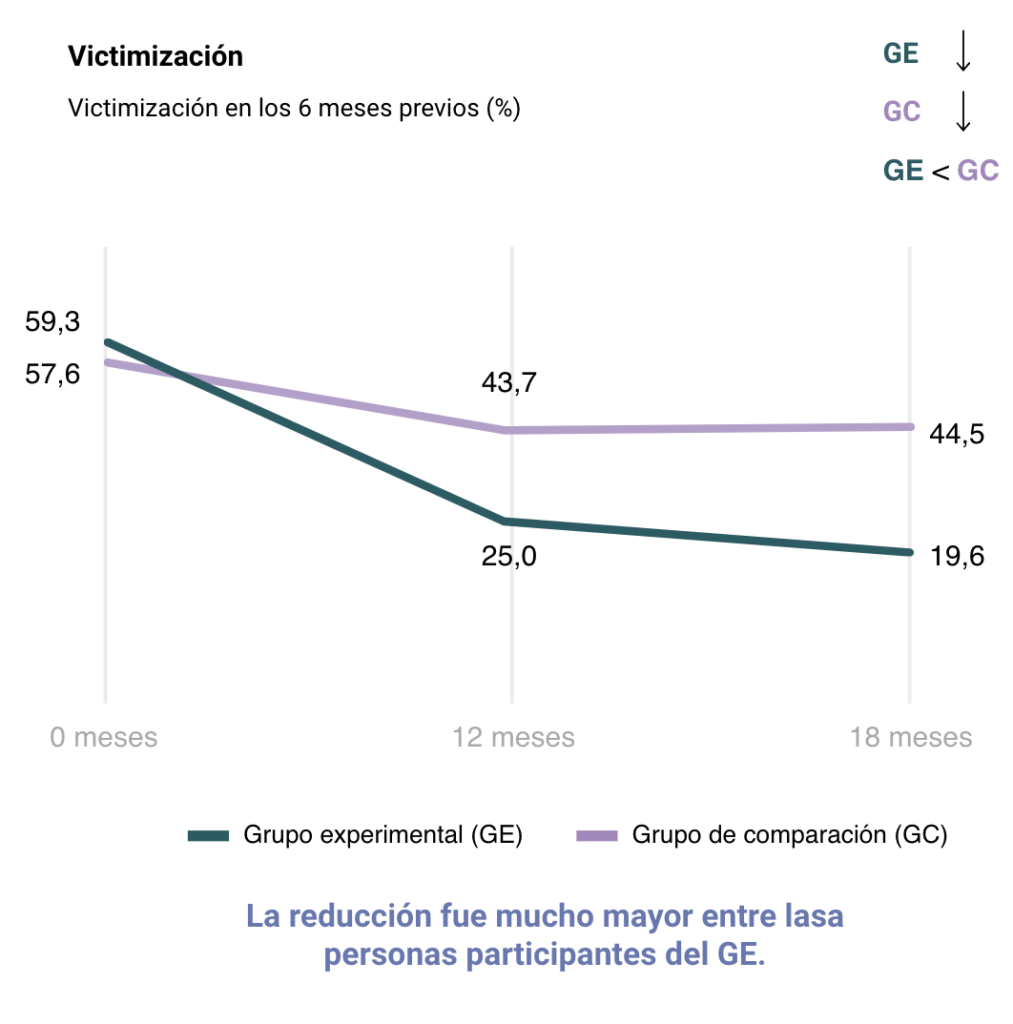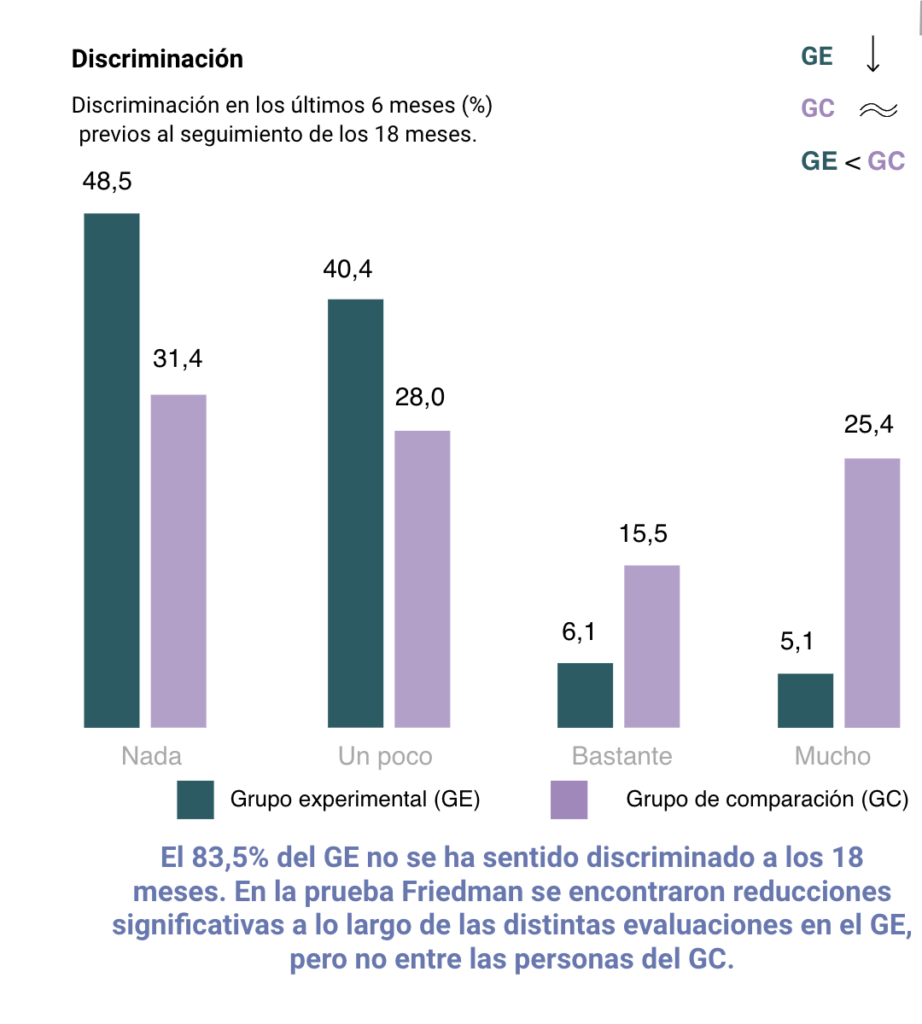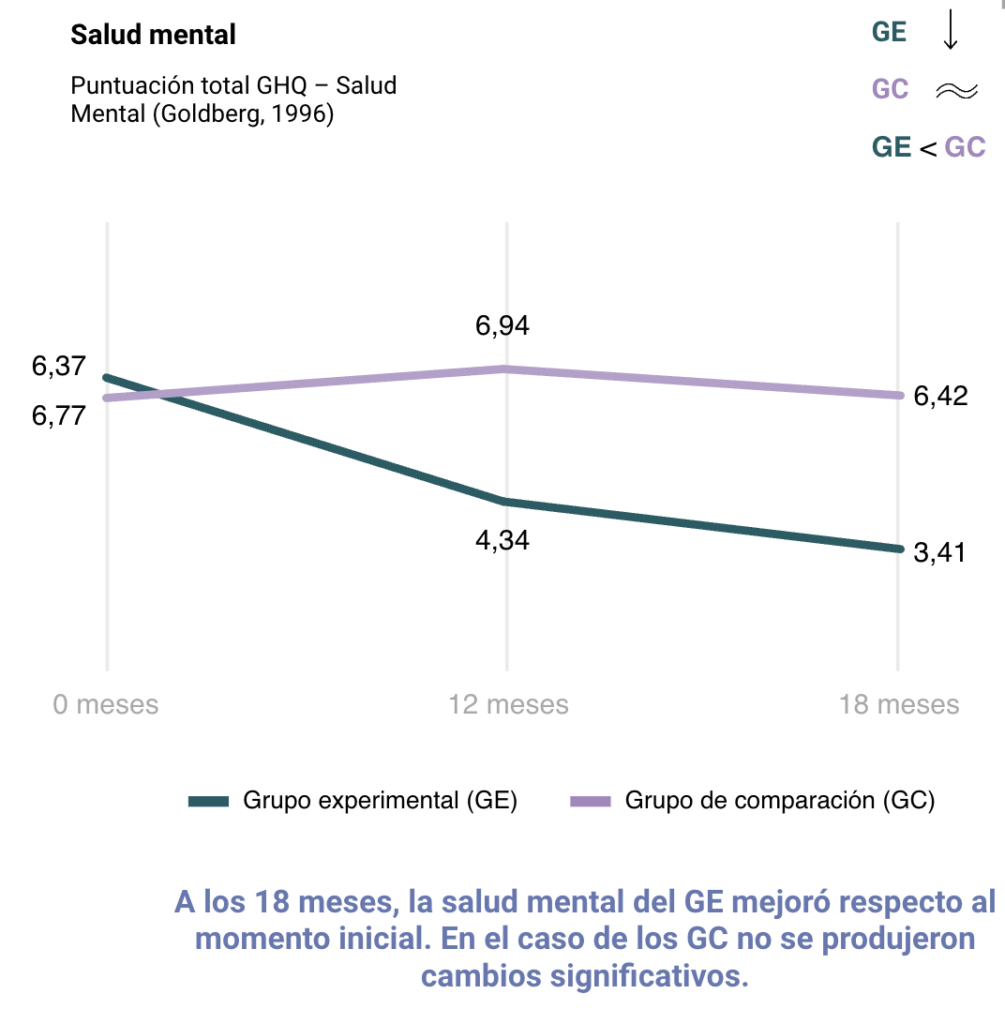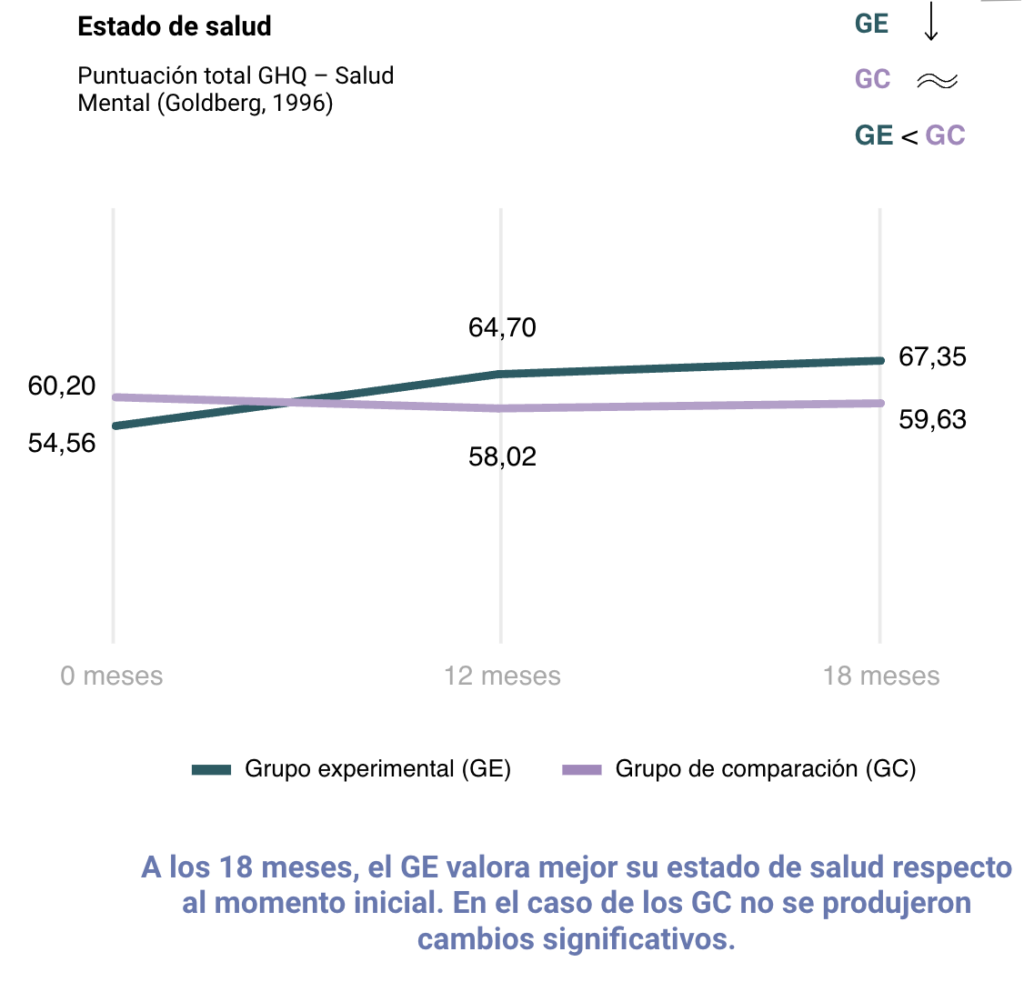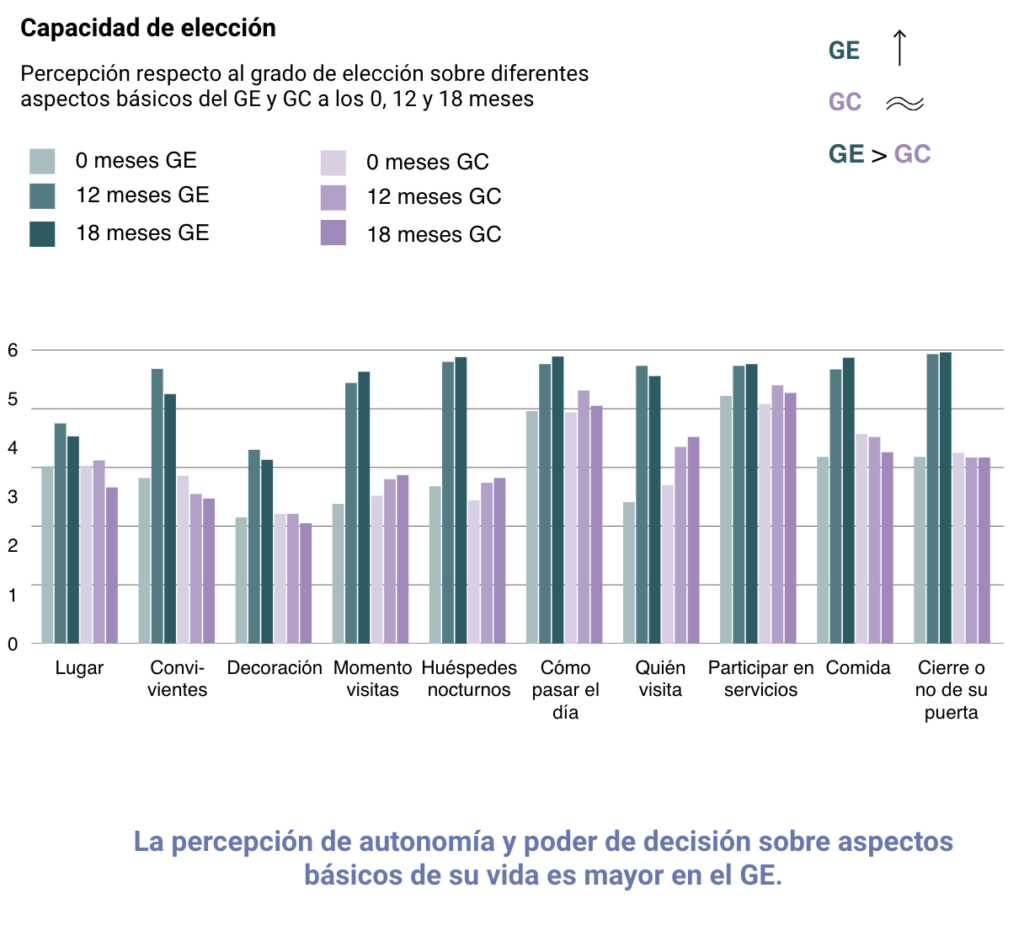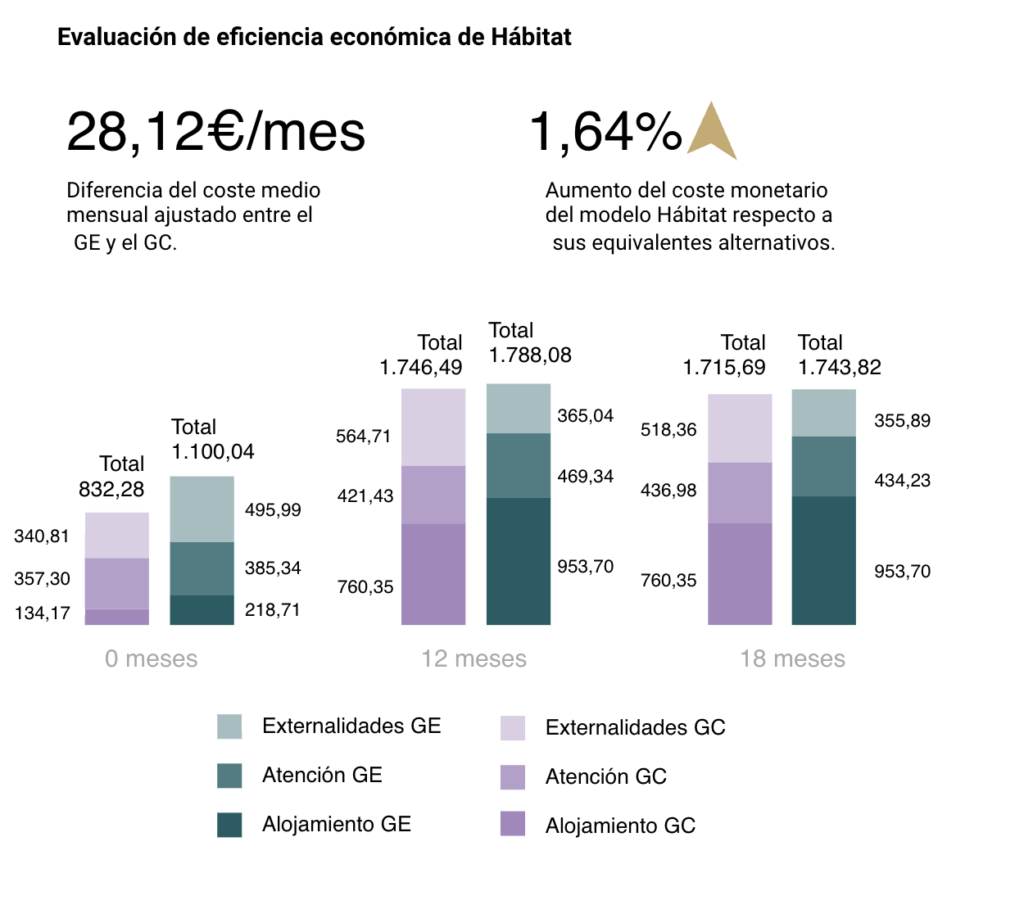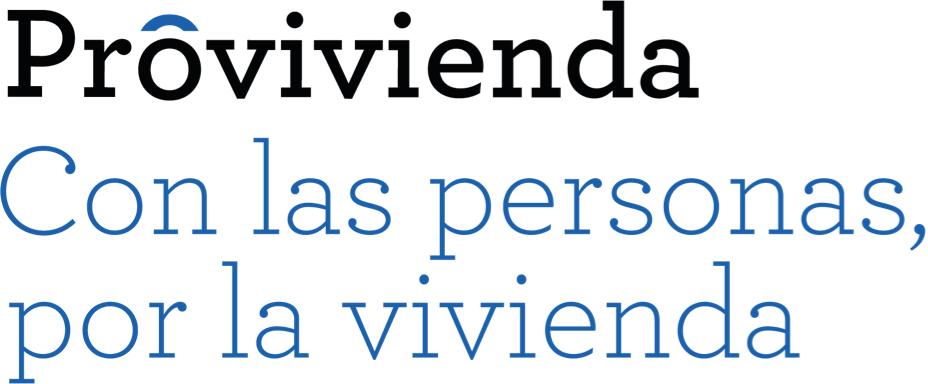DIGITAL REPORT
Solutions to homelessness
Evaluation of the Housing First methodology in Spain
Housing retention
Main indicator of program success
Comparison group (CG)
Experimental Group (EG)
In a homeless shelter
Apartment provided by an NGO or agency
Accommodations for specific groups
In an apartment or house in property (parents/partner included)
In a rented room / guesthouse or similar
In a shack
Habitat Apartment (companion)
In an emergency shelter
In spaces not suitable for living
Pension paid by an NGO or agency
Occupied apartment
In a rented apartment or house
In an apartment / room provided free of charge
Elsewhere
Conclusions:
Mental health improves almost 3 points in the Habitat Group compared to the traditional care system. of the traditional care system.
Pain, anxiety and depression are clearly reduced if housing is available. housing is available.
At the beginning of the evaluation, there were no statistically significant differences between the two groups. but the Habitat Group score improved at 12- and 18-month follow-ups. months.
The evaluation shows favorable differences in what are known as harm reduction strategies. harm reduction strategies.
Housing First provides support to all those who need it without making any preconditions such as absence of such as absence of drug use, acceptance of mental health treatment or motivation to change. for change.
Choice is also increasing in the Habitat Group thanks to individual and standardized housing. individual and standardized housing.
Housing First provides a sense of choice that facilitates engagement and increases housing stability. increases housing stability.
The Habitat model offers far superior benefits for users in terms of stability and quality of housing and personalized in terms of stability and quality of housing and personalized assistance.
Its advantages remain independent of other elements: what is decisive are the characteristics of the program. the characteristics of the program.
In adjusted terms, the difference in cost between Habitat and its alternatives would be just 2.38% after 12 months (€41.59 per month) and just 1.64% after 18 months (€28.12 per month). months (€28.12 per month)
The total adjusted average monthly cost at 18 months for the Experimental Group was 1,743.82 and 1,715.69 in the Comparison Group.
Habitat tends to reduce costs, while its alternatives increase them.
So much so that the (adjusted) cost increased in both groups, but to a lesser extent in the Habitat group ( +58.52% ) than in the control group ( +106.14% ). in the Habitat group (+58.52%) than in the control group (+106.14%).
Based on a scenario in which Habitat is articulated through the rental of public housing, the total final costs in equivalent adjusted terms would be 36.68% lower than in the case of public housing, the final total costs in equivalent adjusted terms would be 36.68% lower than its alternatives . alternatives.
While the monthly cost of the Habitat program would be €1,086.40, in the case of the traditional traditional care alternatives would reach €1,715.69 per month.
The savings generated by Habitat offset the program's cost overrun.
The Habitat program is cost-effective: a quality institutional response to which it is efficient to dedicate funding. efficient to dedicate funding to, with an important comparative advantage over other alternatives. alternatives.
